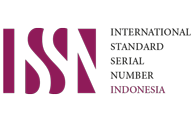Development of Multi-Filtration Method in Waste Treatment of PT "X" Glasses Industry in Surabaya
Abstract
The wastewater treatment plant (WWTP) is an important instrument for the industrial world to treat its liquid waste so as not to endanger the environment. The eyeglass lens industry has wastewater that has a very high level of turbidity due to residual sediment from the lens cutting and scrubbing process. The treatment of liquid waste with a filtration system aims to reduce the value of TSS, COD, pH, Oil and Grease and observe BOD, so that it is hoped that the treated water can be clearer to be used as raw water for the next process (Re-Use). Experimental results from research with physical tests using filtration or membrane methods show the levels of TSS previously 46.033 mg/L to < 2.5 mg/L, pH previously 6.9 to 7.1, COD previously 373.3 mg/L to 265 mg/L, Oil & Grease previously 2.88 mg/L to 2.03 mg/L, and BOD5 previously 100.2 mg/L to 105.4.
Keywords
Full Text:
PDFReferences
Budianto, A., et al. "Physics and chemical activation to produce activated carbon from empty palm oil bunches waste." IOP Conference Series: Materials Science and Engineering. Vol. 1010. No. 1. IOP Publishing, 2021.
Shim, Ho Y., et al. "Application of electrocoagulation and electrolysis on the precipitation of heavy metals and particulate solids in washwater from the soil washing." Journal of Agricultural Chemistry and Environment 3.04 (2014): 130.
Kim, Dong-Ho, et al. "Transport analysis of particulate matter in media-saturated mesh tube filters for the desalination primary pretreatment process." Desalination 495 (2020): 114642.
Pettersson, Anita, Lars-Erik Åmand, and Britt-Marie Steenari. "Leaching of ashes from co-combustion of sewage sludge and wood—Part I: Recovery of phosphorus." Biomass and Bioenergy 32.3 (2008): 224-235.
Refbacks
- There are currently no refbacks.







